#ford beeb
Text












Fantasia (1940).
#fantasia#fantasia (1940)#james algar#samuel armstrong#ford beebe jr.#norman ferguson#david hand#jim handley#t. hee#wilfred jackson#hamilton luske#bill roberts#paul satterfield#ben sharpsteen#James Wong Howe
223 notes
·
View notes
Text
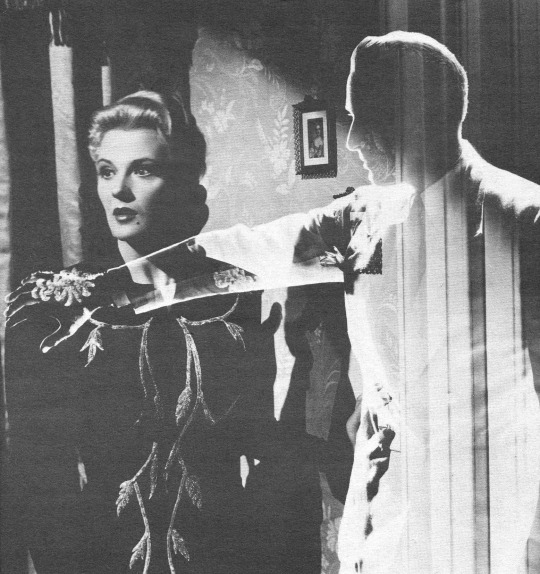
Evelyn Ankers and Alan Curtis in The Invisible Man's Revenge (1944)
#the invisible man's revenge#evelyn ankers#alan curtis#1944#1940s movies#ford beebe#universal monsters#universal horror
81 notes
·
View notes
Text

#movies#polls#requested#fantasia#40s movies#disney#david hand#james algar#samuel armstrong#ben sharpsteen#bill roberts#paul satterfield#hamilton luske#jim handley#ford beebe#t. hee#wilfred jackson#norman ferguson#have you seen this movie poll
87 notes
·
View notes
Text

Charles Korvin-Ella Raines "Vuelve Arsenio Lupin" (Enter Arsene Lupin) 1944, de Ford Beebe.
7 notes
·
View notes
Text
Dread by the Decade: Night Monster
👻 You can support me on Ko-Fi! ❤️

★★
Plot: A man invites the doctors responsible for his declining health to his isolated mansion, where they are picked off one-by-one.
Review: Despite decent aesthetics, this film's horror is too sparse and its pace too dry to make up for its rather silly main idea.

Year: 1942
Genre: Supernatural Horror, Mystery, Gothic
Country: United States
Language: English
Runtime: 1 hour 13 minutes

Director: Ford Beebe
Writer: Clarence Upson Young
Cinematographer: Charles Van Enger
Editor: Jack Otterson
Composer: Hans J. Salter
Cast: Irene Hervey, Don Porter, Ralph Morgan, Fay Helm, Lionel Atwill, Frank Reicher, Francis Pierlot, Nils Asther, Bela Lugosi, Doris Lloyd

-----
Story: 2/5 - Despite some genuine mystery, it grows plodding, consisting mostly of people delivering dry dialogue before a rushed climax.
Performances: 3/5 - The cast is mostly natural, save for Asther, whose portrayal of an Indian man is laughable.
Cinematography: 3.5/5 - Good atmospheric lighting. The fog shots are surprisingly decent.
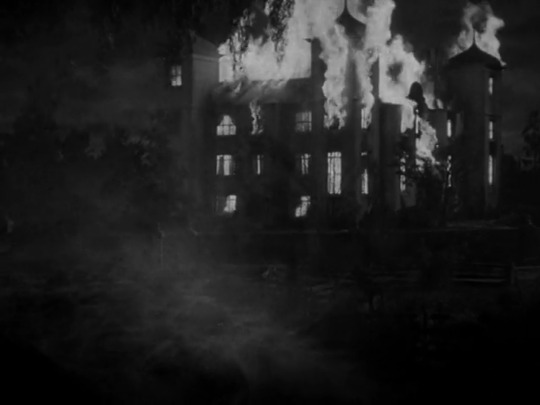
Editing: 3/5 - Smooth and coherent.
Music: 2.5/5
Effects & Props: 2.5/5 - Fluctuates between decent and cheap.
Sets: 4/5 - The ornate mansion is lovely and elaborate, with a particularly striking stairwell set.
Costumes, Hair, & Make-Up: 3/5
youtube
Trigger Warnings:
Minor violence
Suicide
Attempted sexual assault
Sexual harassment
Brownface
Inaccurate, racist portrayal of Hindu beliefs
Misogyny (uncritical)
Ableism (uncritical)
#Night Monster (1942)#Night Monster#Ford Beebe#American#supernatural horror#gothic#Dread by the Decade#review#1940s
3 notes
·
View notes
Text

Wikipedia link
Letterboxd link
#movies#polls#fantasia#40s movies#disney#david hand#james algar#samuel armstrong#ben sharpsteen#bill roberts#paul satterfield#hamilton luske#jim handley#ford beebe#t. hee#wilfred jackson#norman ferguson#filmblr#letterboxd#watchlist poll#credit to haveyouseenthismovie poll for insp and format
2 notes
·
View notes
Text










Night Monster (1942)
"Why don't you have Millie do that, Miss Judd? That's a maid's work, not a housekeeper's. You needn't answer because I know the reason: that spot under your hand is blood and you didn't want anyone to know."
"Blood? Ridiculous."
"Yes, it is ridiculous. It couldn't be blood, but it is. I've seen those spots before and I've seen you trying to scrub them out because you knew what they were. Blood, the whole house reeks of it. The air is charged with death and hatred and something that's unclean!"
#night monster#1942#horror film#american cinema#ford beebe#clarence upson young#bela lugosi#lionel atwill#leif erickson#irene hervey#ralph morgan#don porter#nils asther#fay helm#frank reicher#doris lloyd#francis pierlot#robert homans#janet shaw#eddy waller#cyril delevanti#thoroughly enjoyable haunted house whatnot that's obviously trying to do too much but still comes out the other side a Good Time#we've got mishaps and mayhem and murders and mesmerism (not to mention medical malpractice) and all squeezed into a little over 70 minutes#(sigh those were the days). Lugosi and Atwill take top billing despite only really having supporting roles (Atwill in particular could be#better described as a cameo) but both are clearly having fun in their roles and nobody is taking this too seriously (how could they?)#gets a little messy in the back half and ends with some crucial weirdness just kind of handwaved away without proper explanation#but I'll forgive it because it's just so concerned with being a silly fun time that of course its brains fall out of the plot. one element#of the plot (a sex pest chauffeur who relentlessly pursues every woman in the film in a sinister fashion) could probably have been trimmed#back but this is still a hugely charming and (to me) entirely irresistible bit of old spooky hokum
2 notes
·
View notes
Text
What’s Fact and What’s Fiction in Ford v. Ferrari - Matthew Phelan @Slate
The racing movie plays fast and loose with the facts, but some of its most unbelievable details are straight from the record books.
Christian Bale and Matt Damon in Ford v Ferrari and Ken Miles with Carroll Shelby. Photo illustration by Slate. Photos by Merrick Morton/20th Century Fox and Bernard Cahier/Getty Images.
To say that Ford v. Ferrari plays fast and loose with the facts is arguably to…
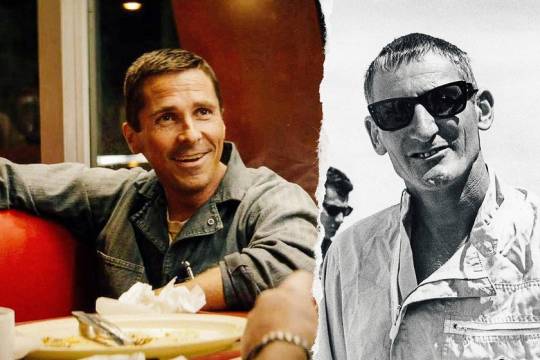
View On WordPress
#Carroll Shelby#Ford v Ferrari#GT40#Henry Ford II#Ken Miles#LeMans#Leo Beebe#Matthew Phelan#Shelby American#Slate#What’s Fact and What’s Fiction in Ford v. Ferrari
5 notes
·
View notes
Text
On September 30, 1939 The Phantom Creeps debuted in the United States.
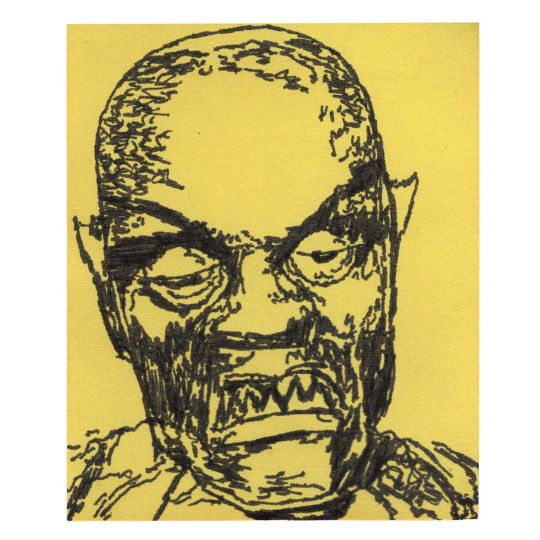
#the phantom creeps#ford beebe#1930s movies#b movies#bela lugosi#black and white film#science fiction film#science fiction#horror art#horror film#horror movies#horror#serial film#robot art#robots#movie art#art#drawing#movie history#pop art#modern art#pop surrealism#cult movies#portrait#cult film
4 notes
·
View notes
Text
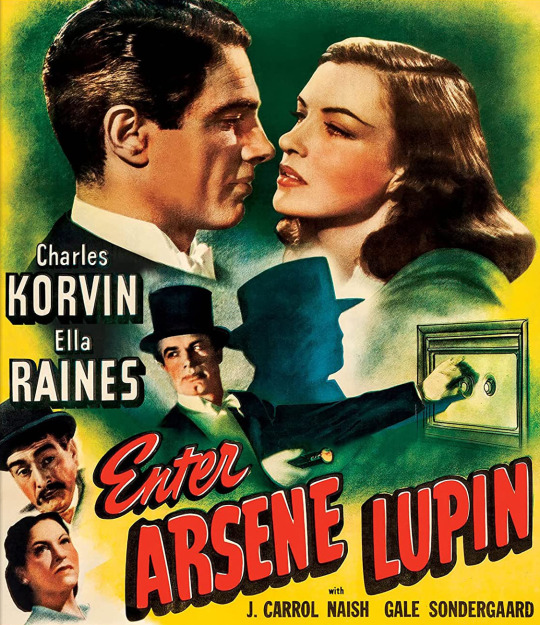
Films Watched in 2024:
80. Enter Arsène Lupin (1944) - Dir. Ford Beebe
#Enter Arsène Lupin#Ford Beebe#Charles Korvin#Ella Raines#J. Carroll Naish#George Dolenz#Gale Sondergaard#Miles Mander#Leyland Hodgson#Holmes Herbert#Arsène Lupin#Maurice Leblanc#Films Watched in 2024#My Post
1 note
·
View note
Text
Night Monster (1942): A Lackluster Attempt at Horror
Night Monster (1942) #Review
Synopsis- A man (Lionel Atwill) uses mind over matter to replace his legs, then hunts the doctors who took them.
Director- Ford Beebe
Cast- Bela Lugosi, Lionel Atwill, Fay Helm
Genre- Horror | Mystery
Released- 1942
⭐⭐
Rating: 2 out of 5.
Night Monster may have been released during the golden age of Hollywood and star one of horrors greatest ever stars (Lugosi), however, fails to live up…
#1940s Cinema#★★#Bela Lugosi#cinema#Fay Helm#film review#Film Reviews#Ford Beebe#Horror#Lionel Atwill#movie review#Mystery
0 notes
Text

Fantasia (1940)
8/10
#1940#samuel armstrong#James Algar#bill roberts#paul satterfield#ben sharpsteen#David D. Hand#hamilton luske#Jim Handley#Ford Beebe#T. Hee#Norman Ferguson#wilfred jackson#disney#8
0 notes
Text

Bela Lugosi in The Phantom Creeps (1939)
#the phantom creeps#bela lugosi#1939#1930s movies#ford beebe#saul a. goodkind#action#sci fi#horror#serials
63 notes
·
View notes
Text
Team Orders: The Dirty Little Secret of Motorsports
In most team sports, your entire team either loses, wins, or draws. There isn't a state where some of your team wins and some of your team loses. Whilst in individual sports, it's you versus everyone else, so your job is pretty simple. Motorsports, however, exists in an awkward middle ground: you are both part of a team, and you are competing for individual glory.
This can meltdown in one of two ways. The first is when individual glory prevails over playing the team game, such as the Ayrton Senna and Alain Prost crash at Suzuka 1989, or the various Lewis Hamilton and Nico Rosberg collisions, most prominently at Spain 2016. Then there's the other way: when the team prevails over individual glory.
The team orders.
This last weekend we saw team orders come into play as Oscar Piastri was leading the Hungarian Grand Prix, but McLaren pit second placed Lando Norris early to cover off any potential threat from Lewis Hamilton. This was an odd move as Lewis wasn't really all that close to either McLaren at this point, and the undercut gave Lando a massive advantage over Oscar.
Oscar Piastri pits two laps later and comes out in second. The gap widens to about six seconds, and McLaren spends the next chunk of the race trying to tell Lando to be a good teammate and let Oscar by in the end. McLaren started with light requests, then told Lando to remember the team, and eventually just started guilt-tripping Lando into giving up second.
Lando eventually lifted off on the straight, let Oscar pass, and Piastri took his first Formula One Grand Prix victory.
Now, Lando got the pole and was clearly the faster car at the end of the race, however, Piastri got the lead off the start, pulled away, and was in the lead when McLaren decided to pit Lando first. Really, I think the biggest problem is that McLaren decided to pit Lando first despite the fact that everyone could see that fresh tyres were a massive advantage at the Hungaroring.
Still, it's clear that Lando didn't particularly want to move over, and it's clear that McLaren was pretty desperate to get him to let Oscar by.
The big lift off the straight necessary to let Piastri by is also somewhat of a statement, Lando was making a point over how choreographed this switch was.
So, the team made the strategy call that flipped the order and made the drivers flip it back despite the fact that Norris didn't particularly seem to want to.
Where does that leave this case in comparison to a few other famous cases of team orders?
Well, one of the most famous examples is from the 1966 24 Hours of Le Mans, where - as seen in the movie Ford vs. Ferrari - where Ken Miles and Denny Hulme's #1 Shelby American Ford GT40 Mk. II was leading from the #2 sister car of Bruce McLaren and Chris Amon. In third - albeit twelve laps down - was another GT40 Mk. II, the #5 Holman & Moody car of Ronnie Bucknum and Dick Hutcherson. Ford man Leo Beebe ordered the three cars to finish in a dead heat for the photo opportunity.
Miles in the #1 car slowed down to let the #2 catch up, and Ford got their photo finish. The only problem was that McLaren and Amon finished a nose ahead, on top of the traditional part of the story where they started a further two spots behind the #1 and therefore traversed a greater distance.
The commonalities between this and Hungary 2024? Well, the lead car was ordered to slow down and that led to the car in second place taking the victory.
Then in the late 1990s into the 2000s, we got a slew of controversial team orders in Formula One, which eventually culminated in team orders getting banned.
First comes the 1997 European Grand Prix at Jerez, where, after the championship deciding crash between Jacques Villeneuve and Michael Schumacher, Schumacher is out of the race, out of the championship hunt, and will soon be disqualified from the 1997 season altogether, while Jacques is limping his car home, currently in the lead.
However, Williams then tells Jacques to let the McLarens of Mika Hakkinen and David Coulthard through. Jacques thus finished third, narrowly ahead of fourth placed Gerhard Berger. Now, it made sense for Jacques to let the faster McLarens through since he only needed a single point to match Michael and then beat him on countback, or two to beat him outright. First was worth 10, third was still worth 4.
The thing is that Williams and McLaren actually had an arrangement where, if McLaren helped Williams - or at least didn't get in their way - then Williams would help McLaren, so it wasn't just a matter of Jacques protecting his car, he was ordered to let the McLarens by.
To add fuel to the fire, McLaren had used team orders in that very race already, as Hakkinen started ahead at Jerez only to wind up behind Coulthard on pit strategy, something McLaren "fixed" with team orders, in a case very similar to Hungary 2024.
Also similar was the very next race, Australia 1998, where Hakkinen had some sort of radio mishap - accounts vary from him mishearing something to someone outright tapping McLaren's comms to call Mika in - went through the pits and emerged behind Coulthard. Ron Dennis again used team orders to correct an issue that came out of pit lane.
Also in 1998 was the Jordans at Spa, which I talked about in last week's blogpost. There, in treacherous wet conditions, Jordan ordered Ralf Schumacher to stop catching teammate Damon Hill and remain in second place, conserving the team's first 1-2 finish on the stormy day.
Now that I've established Williams, McLaren, and Jordan were all doing this stuff too, let's get to the name synonymous with team orders in this period: Ferrari.
First was a rather understandable case: the 1999 German Grand Prix, where Mika Salo - filling in for Michael Schumacher who broke his legs at the British Grand Prix earlier that year - was ordered to let Eddie Irvine by for the win. Mika Salo was just the fill in driver, Eddie Irvine was competing for the championship, and championship rival Mika Hakkinen crashed out after a tyre failure, so this was a ten-point gain for Irvine. All of that made sense.
What made less sense was Austria 2002, where coming onto the start-finish straight for the final time, Rubens Barrichello lifted off big time to let Michael by and allowed Schumacher to take his fifth win of the season - fourth in a row - in just the sixth race of the season. Yeah...it was not particularly necessary...and the fans let Ferrari know by booing the podium.
Even Michael didn't seem proud of it, as he let Rubens stand on the top step of the podium in his place.
The similarity to Hungary 2024? The big show of a lift to let the teammate past, though this was more dramatic given Rubens did it quite literally on the run to the line.
In the United States Grand Prix at Indianapolis at the end of that season, Schumacher would lift off and let Rubens finish alongside, which actually led to Rubens winning the race by 0.011 seconds. Schumacher and Ferrari have maintained that this was a botched photo finish, much like Le Mans 1966, but there has been a persistent theory that Michael was returning the favor for Austria earlier that season.
All of these incidents in quick succession and the growing controversy around them led to the FIA, after the 2002 season, banning the use of team orders.
So why were team orders allowed to happen in Hungary 2024?
Well, it turns out enforcing a ban on team orders is hard.
The crashgate scandal in 2008 - where Renault ordered Nelson Piquet Jr. to crash deliberately as Fernando Alonso was coming to the pits to bring out the safety car - was revealed in the summer of 2009.
Then in the 2010 German Grand Prix, we have the famous "Felipe, Fernando is faster than you, confirm you understood the message" case, where Massa was ordered to let Fernando by for the championship.
These two incidents led to the FIA conceding that they weren't actually able to police team orders, so as much as they would ban Briatore and Symonds on the Renault front and fine Ferrari, neither race result was overturned. The team orders ban was gone after the end of 2010, having only lasted eight seasons.
So team orders are now legal again, and the case of Multi-21 from the 2013 Malaysian Grand Prix is the most famous example. Sebastian Vettel was ordered to remain behind Mark Webber, refused, and overtook the Australian to take the win. For what it's worth, Mark Webber is Oscar Piastri's manager. Multi-814 doesn't quite have the same ring to it though.
Disregarding team orders and taking the win is something a lot of people have suggested that Lando should've done, that yielding proves he doesn't have the ruthless edge to be a championship caliber driver.
On the other hand, McLaren's team radio to Lando insisted that Lando and Oscar have helped each other countless times and they'll need each other's help to win the championship. Multi-21 was in Vettel and Webber's last year as teammates and there's always been the suggestion that Vettel refusing to yield is part of the reason why Mark retired.
Lando and Oscar are both young and quick, they can both be with McLaren for a long time provided Zak Brown can keep his lust for young drivers in check, so maybe Lando yielding to Oscar was the right call.
Time will tell if giving the position in the end was enough, or if all the will-he-or-won't-he itself will ensure Piastri won't be as trusting of Norris in the future.
Always in motion the future is.
19 notes
·
View notes
Text

Ella Raines-Charles Korvin "Vuelve Arsenio Lupin" (Enter Arsene Lupin) 1944, de Ford Beebe.
13 notes
·
View notes
Text
September Challenge Movies Poll
11 notes
·
View notes